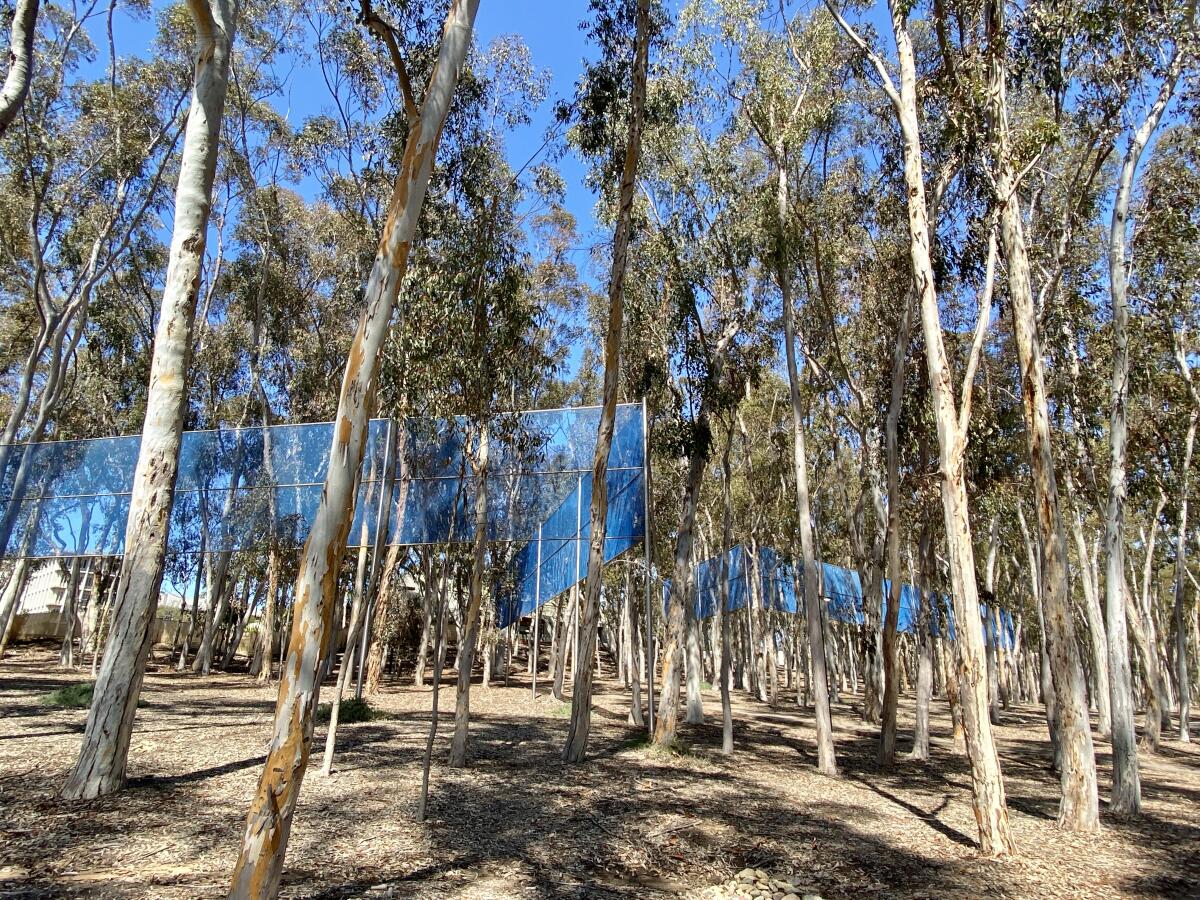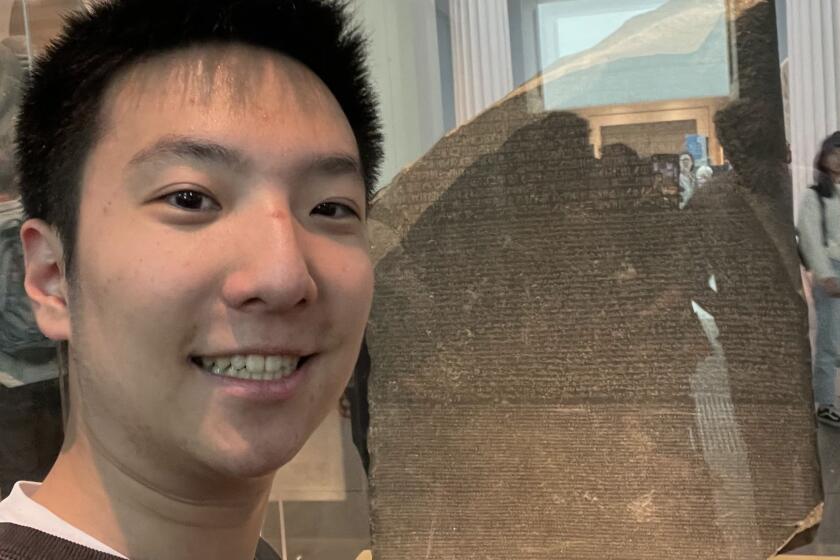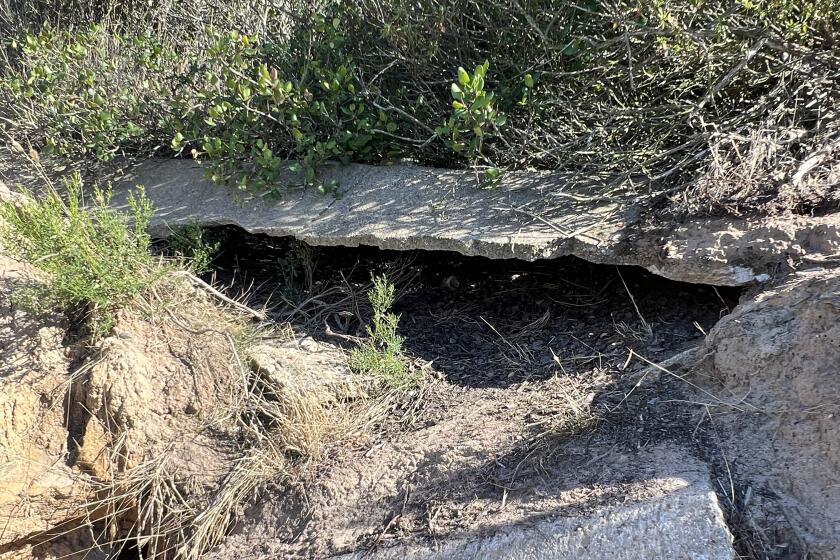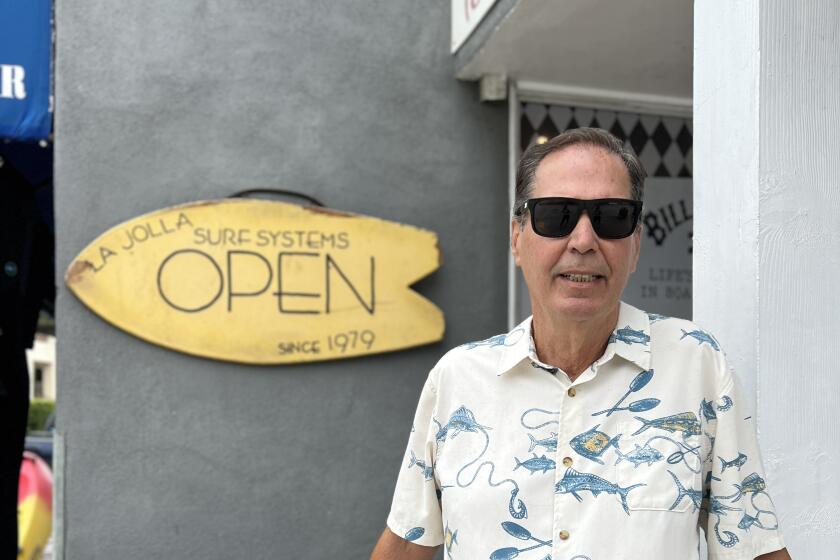La Jolla Heroines: Mary Livingstone Beebe curates experiences for UC San Diego students to live with art

The director of the university’s Stuart Collection will retire Dec. 31 after 40 years.
Much of La Jolla’s early advancement was fueled by prolific philanthropist Ellen Browning Scripps. But many more women have followed in being important benefactors to La Jolla. This series by the Light highlights local women who have worked for decades to further the evolution of La Jolla and areas beyond.
Mary Livingstone Beebe believes living with art is an indispensable experience and has endeavored to ensure that local university students are exposed to that tenet daily.
Beebe is the founding, and only, director of the Stuart Collection at UC San Diego in La Jolla. The collection of 20 commissioned sculptures on the university campus began in 1981.
The collection was the idea of James Stuart DeSilva and was funded and owned by the Stuart Foundation until 2002, when the collection transferred ownership to UCSD but retained its name.
Beebe will retire Dec. 31 after 40 years of promoting public art at UCSD.
She is also a committee member for Murals of La Jolla, a project of the Athenaeum Music & Arts Library that curates a collection of murals in public spaces throughout The Village, Bird Rock and The Shores.
She spoke to the La Jolla Light about the Stuart Collection, its legacy and her own.
Q. What has been your approach to directing the Stuart Collection?
A. “I was not trained as a curator. I didn’t want to go around buying things and placing them on campus; that wasn’t my view of how things could happen. I wanted to work with artists.
“I say [to an artist], ‘Let’s walk around, talk about ideas.’ … My goal has always been to make the artists happy but also to make things that feel a part of the university, that are part of the life and the ongoing activity of the university. It’s not just things to look at, they’re experiences in a way.”
Q. What are you most proud of in your 40 years with the Stuart Collection?
A. “I’m just proud of the fact that [the pieces] have become a living part of the campus. They change over time, their interpretations kind of change, but it’s not really a museum experience.
“What we wanted here was something for people to see over and over. … The students change every year, so it becomes a new part of somebody’s world again.”
Q. As a woman, did you face any obstacles to your success?
A. “I’ve never felt a part of the sort of feminist movement [though] I’ve been sympathetic. The university has been really good.
“I’ve had a lucky life where most of my mentors have been women. And … I’ve got three sisters; I’m one of four girls and one boy, so maybe that has something to do with it.
“My parents had always said, ‘Spread your wings and fly. You can do whatever you want.’ I feel really lucky.”

Q. Why do you think the Stuart Collection has garnered such attention over its four decades?
A. “I think these are all important artists. We try to choose artists who ... think in interesting ways, not just artists with a history of public art.
“Encountering these [pieces], I’ve always tried to have fun. There’s no percentage in getting angry about art. People respond differently.”
Q. What’s the next piece in the collection, and will it be the final piece under your direction?
A. “Ann Hamilton is going to do these pavers, a 600-foot walkway that will start at the [new trolley extension station opening in November] with quotes from university people and a poem down the middle. You would land in an ocean of words.”
The walkway will open when the trolley extension begins operating. Beebe said it’s “probably” her final piece for the collection.
Q. What do you wish La Jollans knew about public art?
A. “There’s some people who pay attention and some people who don’t, and some people really respond to it and some people don’t. I think the Murals of La Jolla has awakened quite a few people. I think the experience of art is getting more recognized as a valuable thing in one’s life.
“When ‘Sun God’ went in, people said, ‘Well, it doesn’t represent the university.’ But there is no sort of icon that represents the whole university. I said, ‘There will be more, and we hope you’ll find something that you really like and that together, maybe they’ll represent the diversity of the university.’”
Q. What do you hope for the Stuart Collection after your retirement?
A. “I hope the new director has a lot of energy and vision and gets to figure out how they want to operate within the university, which is getting so big.”
Q. What do you want your legacy to be?
A. “Just the existence of these works. The works collectively have made a difference on campus and added to the sense that art is a part of life here.” ◆
Get the La Jolla Light weekly in your inbox
News, features and sports about La Jolla, every Thursday for free
You may occasionally receive promotional content from the La Jolla Light.




